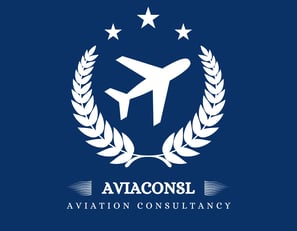Aircraft Insurance
Legal Protection or a Burden on Operators?
Aircraft insurance is one of the fundamental pillars ensuring the continuity of aviation operations without subjecting operators to catastrophic financial losses in the event of accidents. In theory, insurance is meant to provide protection for the affected parties—whether the aircraft owner, operator, passengers, or third parties—ensuring they are compensated promptly and without legal complications. However, in reality, insurance policies often create complex legal issues, making them more of a burden than a safeguard in some cases. Delays in compensation, disputes over coverage, and varying interpretations of policy terms can lead to prolonged legal conflicts, putting airlines and operators in difficult positions.
The first challenge operators face with aviation insurance is determining legal liability. When an incident occurs, different parties involved often try to shift financial responsibility, while insurance companies frequently attempt to attribute operational errors to operators to avoid paying claims. The issue is not only about who is responsible for compensation but also about the actual extent of coverage under the insurance policy. For instance, when an aircraft is damaged or suffers a major malfunction, insurance companies will scrutinize the documents to determine whether the incident falls within the scope of coverage. This highlights one of the most legally complex challenges: the interpretation of policy terms by insurers, as contracts often contain ambiguous exclusions that may surprise the operator or owner when filing a claim.
Regulations governing the aviation insurance sector vary from country to country. In the United Arab Emirates, aviation insurance is mandatory under Federal Law No. (20) of 2016 on the Regulation of the Insurance Sector, which provides a legal framework requiring operators to obtain insurance policies covering operational risks, aircraft damage, and liability toward passengers and third parties. Additionally, the UAE General Civil Aviation Authority (GCAA) establishes minimum required insurance coverage to ensure that companies meet their legal obligations. However, compliance with these laws does not necessarily mean that insurance will serve as absolute protection, as contracts often contain provisions that favor insurers more than operators.
Another issue that aviation companies and operators face is delays in compensation payments. Even if an incident is covered by insurance, companies are rarely quick to process and disburse claims. Instead, they often take a long time to review documents and analyze the details of the incident, leading to serious operational challenges for companies that rely on their fleet’s availability to continue operations. In some cases, legal disputes between operators and insurers last for years. One example is the Pan Am Flight 103 bombing over Lockerbie, Scotland, in 1988, where compensation procedures took more than ten years due to disputes between insurance companies and government entities. Such delays are particularly harmful to smaller airlines and operators that depend on the availability of every aircraft in their fleet, as being unable to operate a single aircraft can lead to significant financial losses, sometimes resulting in bankruptcy.
One of the most complex aspects of aviation insurance is coverage for leased aircraft. When an operator leases an aircraft, they are often required to provide insurance in accordance with the lease agreement. However, when an incident occurs, a complex legal question arises: Who is entitled to compensation? Is it the operator leasing the aircraft, or does the legal owner—the lessor—have the right to claim the insurance payout? In some contracts, the lessor transfers all legal risks to the lessee, even if the lessee was not directly responsible for the incident, putting operators in a weak position when dealing with insurance claims.
Several cases illustrate this issue, where leased aircraft suffered accidents but were not covered due to contractual loopholes. In some instances, insurers have refused to pay out claims by arguing that the malfunction leading to the incident was a design defect rather than an operational failure, thereby absolving themselves of liability. In other cases, insurers denied claims by asserting that the operator failed to meet all maintenance requirements, even if the lack of maintenance was not the direct cause of the incident. This underscores the importance of operators carefully reviewing insurance contracts before signing any leasing or operational agreements.
Because some insurance contracts contain unfair clauses, it is essential for operators to be aware of how to negotiate terms before signing. Some insurers require operators to bear all damages, even in cases of force majeure or unforeseen technical failures, making insurance practically useless when it is most needed. One proposed solution is to clarify insurance responsibilities more explicitly in contracts, ensuring that liability is clearly defined for each party without ambiguity.
Legal disputes over aviation insurance are not limited to aircraft damage liability alone; they also extend to passenger compensation claims. When a passenger is injured during a flight, they may attempt to sue the operator, but insurance companies often employ complex legal strategies to avoid payouts, either by arguing that the injury was not caused by the operator’s negligence or by claiming that passengers did not follow safety instructions correctly. This raises another issue: aviation companies must be fully aware of the laws governing their liability toward passengers, such as the Montreal Convention of 1999, which outlines airlines' legal responsibilities for compensating passengers in case of accidents.
Aircraft insurance is not just a legal requirement or a precautionary measure—it is a crucial component of the aviation industry with significant implications for operators, owners, and lessors. The issue is not whether insurance is necessary but rather how policies are structured to ensure that they provide real protection rather than becoming a legal burden. Operators who do not carefully examine their insurance contracts before signing may find themselves in unexpected situations when facing legal disputes. The solution lies in approaching these contracts with extreme caution, ensuring that coverage terms and legal liabilities are clearly defined and fair for all parties involved.
Ultimately, aviation insurance can either serve as an effective protective measure for operators or become a source of legal complications. Whether it acts as a safeguard or a burden depends largely on the nature of the contracts, the clarity of their terms, and the awareness of the parties involved regarding their rights and obligations before entering into such agreements.
Read more articles:
SUBSCRIBE
Subscribe to be updated about latest news and blog posts and to follow what is happening in a magical land of Bali.




